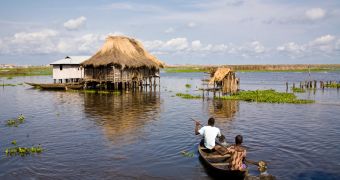A group of scientists at the Massachusetts Institute of Technology (MIT), in Cambridge, determined in a new study that nearly 5 billion people of the world's estimated population of 9.7 billion will suffer from lack of access to fresh, clean water by 2050. This number amounts to around 52 percent of Earth's population by that time.
The investigation has determined that around 1 billion people will inhabit areas where water demands will exceed the total available surface water supply. The other 4 billion people will live in highly water-stressed areas. These conclusions are based on a new water availability model developed at MIT.
Over the past couple of decades, social pressures on global water resources have increased several times over, while population levels continued to increase as well. This trend has led many researchers to focus on water availability studies, in a bid to inform authorities on developing comprehensive and relevant water use policies.
One important factor to consider is global warming and the climate change it causes, since these phenomena are expected to place even more strains on surface water availability and refresh rates.
The MIT study determined that the areas most likely to lack access to the necessary water supplies include regions already severely affected by water scarcity, such as India, Northern Africa and the Middle East. These conclusions are based on predictions stemming from the MIT Integrated Global System Model Water Resource System (IGSM-WRS).
This model is capable of combining predictions and statistics on climate change and socioeconomic factors with a great deal of precision, creating relevant forecasts that could be of great use for informing policy changes.
“Our research highlights the substantial influence of socioeconomic growth on global water resources, potentially worsened by climate change,” explains the lead author of the study, Adam Schlosser.
The expert holds an appointment as the assistant director of science research at the MIT Joint Program on the Science and Policy of Global Change. The institute uses advanced measurement, modeling and prediction techniques to assess long-term changes in land, air and water usage and availability.
“Developing nations are expected to face the brunt of these rising water demands, with 80 percent of this additional 1.8 billion living in developing countries,” Schlosser goes on to say.
“There is a growing need for modeling and analysis like this, which takes a comprehensive approach by studying the influence of both climatic and socioeconomic changes and their effects on both supply and demand projections. Our results underscore this need,” the investigator concludes.

 14 DAY TRIAL //
14 DAY TRIAL //